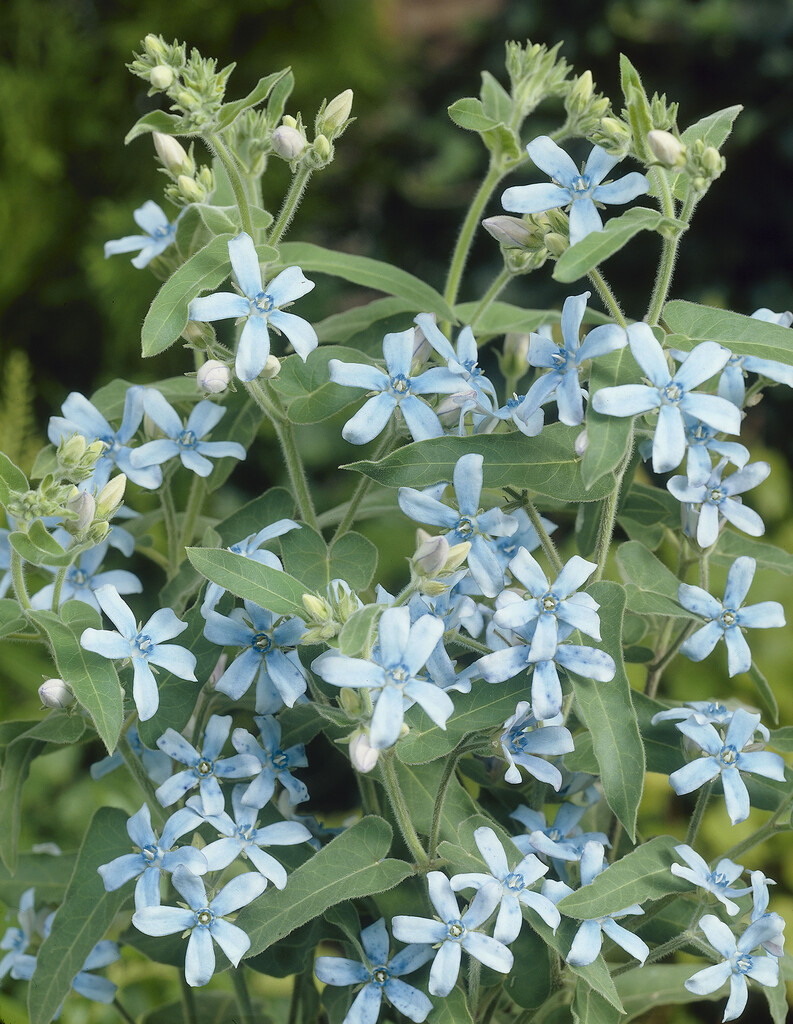Size
Ultimate height
0.5–1 metresTime to ultimate height
2–5 yearsUltimate spread
0.1–0.5 metresGrowing conditions
Moisture
Moist but well–drained, Well–drainedpH
Acid, Alkaline, NeutralColour & scent
| Stem | Flower | Foliage | Fruit | |
| Spring | Green | |||
|---|---|---|---|---|
| Summer | Blue | Green | ||
| Autumn | Blue | Green | ||
| Winter |
Position
- Full sun
Aspect
South–facing or East–facing or West–facing
Exposure
Sheltered Hardiness
H1CBotanical details
- Family
- Apocynaceae
- Native to GB / Ireland
- No
- Foliage
- Evergreen
- Habit
- Climbing
- Genus
Tweedia is a scrambling evergreen subshrub with weakly twining stems bearing simple, hairy leaves and loose axillary clusters of star-shaped, 5-petalled flowers
- Name status
Correct
- Plant range
- Brazil, Uruguay
How to grow
Cultivation
Under glass grow in loam-based compost in full light; water freely in summer but keep just moist in winter. Can be grown outdoors in light, fertile, well-drained soil in frost-free area; can be treated as an annual in frost prone areas. Provide support for the climbing stems
Propagation
Propagate by seed sown at 15°C in spring or strike softwood cuttings in summer with bottom heat
Suggested planting locations and garden types
- City and courtyard gardens
- Patio and container plants
- Cut flowers
- Wall side borders
Pruning
Pruning group 13 in early spring
Pests
Generally pest-free
Diseases
Generally disease-free
Love gardening
Sign up to receive regular gardening tips, inspiration, offers and more
View our Privacy Policy
Get involved
The Royal Horticultural Society is the UK’s leading gardening charity. We aim to enrich everyone’s life through plants, and make the UK a greener and more beautiful place.

